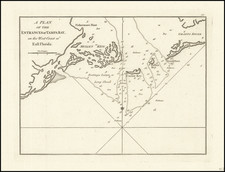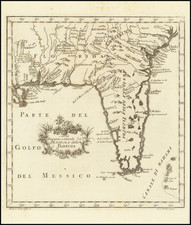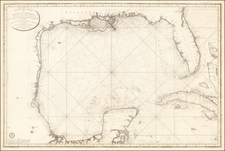Fascinating contemporary panomaric photograph showing the aftermath of the devasting Great Miami Hurricane of 1926 in West Hollywood, Florida.
The Great Miami Hurricane of 1926
By 1926, Dade County and the Greater Miami area had seen rapid population growth and extensive construction, with the population surpassing 100,000—a significant increase from the 42,753 recorded in the 1920 census. The burgeoning city expanded, incorporating neighboring settlements such as Lemon City, Cocoanut Grove, and Little River. Miami Beach, created on barrier islands across Biscayne Bay, was a hive of new building activity. The U.S. Government, recognizing Miami's potential for growth and economic importance, had relocated a cooperative weather station to the city in 1900 and established a first-order Weather Bureau Office in 1911.
The Great Miami Hurricane of 1926, originating from Cape Verde, was first detected by ship reports in the central tropical Atlantic on September 11. It bypassed established Caribbean reporting channels, thus remaining largely untracked. The centralized storm warning system in Washington, D.C., failed to issue adequate warnings to Miami until less than 24 hours before the hurricane struck. Hurricane warnings were only raised on the evening of September 17 by the Miami Weather Bureau Office, led by Richard Gray.
As the hurricane made landfall on September 18, residents, inexperienced with hurricanes, mistakenly ventured outside during the eye's temporary calm, believing the storm had passed. This interlude was brief, and the hurricane's fiercest part soon followed, bringing a 10-foot storm surge that flooded Miami Beach and areas of the city.
The aftermath was devastating, with the Red Cross reporting 372 fatalities, over 6,000 injuries, and damages equivalent to over $164 billion in today's currency. The hurricane struck Florida again near Pensacola on September 20 before weakening as it moved to Mississippi and Louisiana.













![(Yosemite Photographs) [Contemporary Album of 12 Albumen Photographs of Yosemite Valley] Views in California [binding title]](https://storage.googleapis.com/raremaps/img/small/94232.jpg)


![(Germany) [Sketch and Albumen Print Album / Travels Along the Rhine River, including Nuremberg] Reis langs den Ryn Frankfort, Heidelberg, Munchen, Weenen, Tyrol, Salzburg, Dresden en de Sachsische Schweiz](https://storage.googleapis.com/raremaps/img/small/89724.jpg)